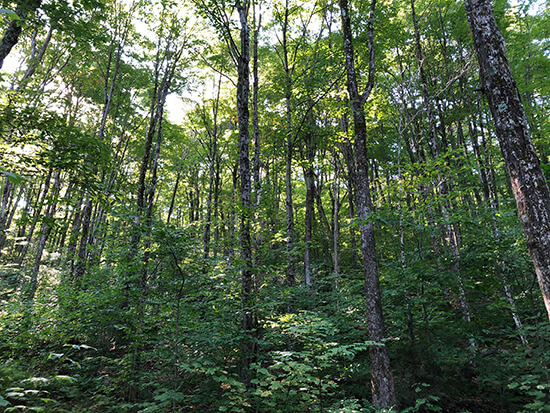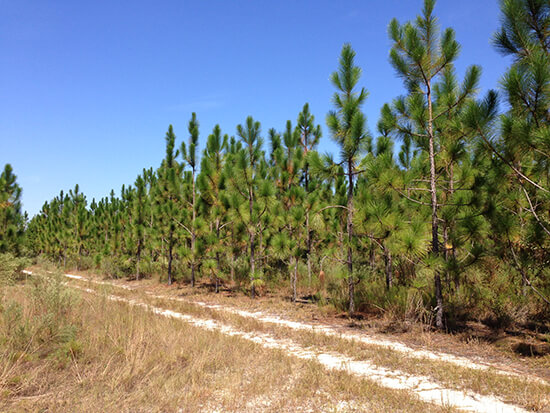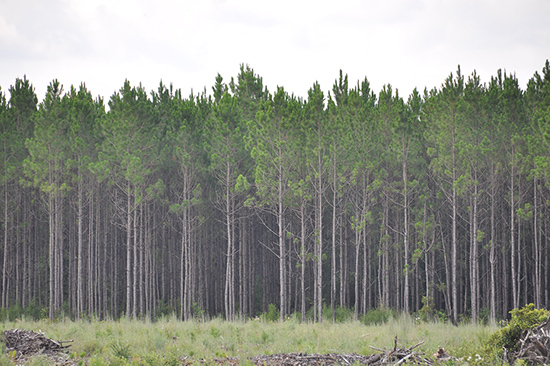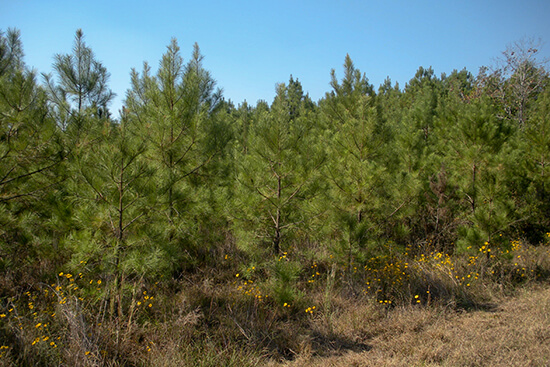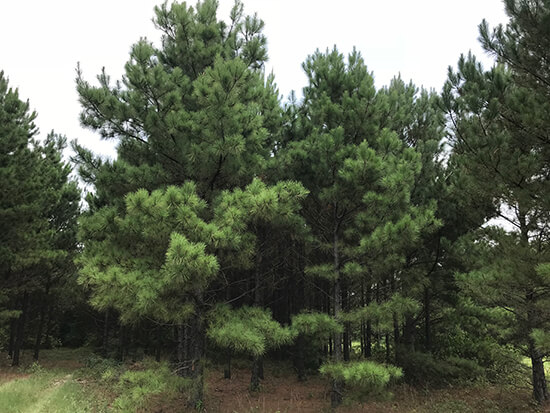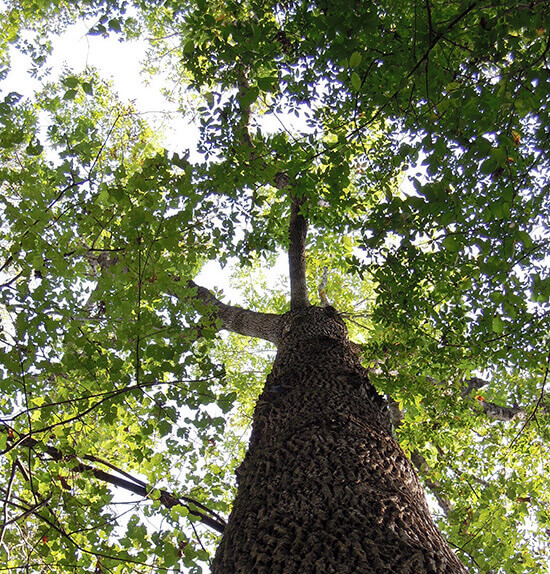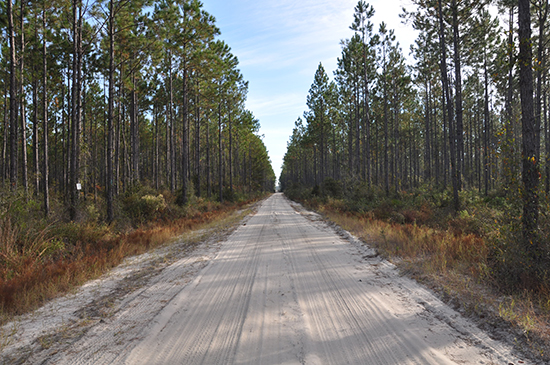Summary Update
COVID-19 Impact — How will the COVID-19 Pandemic affect timberland portfolios? It is still too early to try to assess the full impact of the coronavirus, but some trends are becoming clear.
Housing starts averaged 1.6 million starts over the last two months before the impact of the virus – the highest number since the global financial crisis. These numbers were well in excess of the estimates for December 2019, and January and February 2020. Housing was healthy and building products demand was growing. Lumber and panel prices reflected this increased demand. Since then, as expected, housing and building products demand has slowed considerably. The net result of the housing slowdown is a substantial drop in lumber and panel demand. Many sawmills and panel plants have reduced production and have stopped taking wood deliveries for the moment.
While many states deemed the forest products sector “essential” allowing mills to remain open, several States have closed parts of the forest products industry to help stem the spread of the coronavirus. Even so, most solid wood manufacturing facilities in the South and Pacific Northwest are not taking wood deliveries, and many are taking voluntary downtime to adjust their manufacturing output with current demand. We expect this to continue for a couple of months.
It is important to remember that while some markets for finished wood products are highly correlated with GDP, others are not. Lumber and panels are, as expected, correlated with GDP, but most paper products such as tissue, fluff pulp and hygiene products are not correlated with GDP. This presents a somewhat fluid situation with pulp and paper mills running while solid wood facilities remain closed or running at significantly less than capacity. Hence, certain parts of the pulp and paper sector will continue to perform well during the economic downturn.
Timber Prices
Southeastern — Despite COVID-19 disruptions and uncertainty, pine products experienced positive price movements over the first quarter of 2020. Forest2Market® reported a 4.6% increase in Southern pine sawtimber prices over the first quarter of 2020; prices ended the quarter 7.2% below last year’s level. Pine chip-n-saw prices increased 6.8%, ending the year 7.9% below year ago prices. Pine pulpwood prices improved 6.8% over the quarter; however, prices remain down 22.1% year over year. Hardwood pulpwood prices decreased 7.9%, while hardwood sawtimber prices dropped 1.1%.

Northern Hardwoods — Stagnant demand for hardwood timber continued over the first quarter. The eventual signing of the Phase 1 trade deal with China created brief hope that export markets would improve, however the COVID-19 virus created unprecedented disruption and uncertainty. Most of the hardwood industry in the region continue to operate as “essential businesses” and harvesting operations continue. According to the Pennsylvania Woodlands Timber Market Report, black cherry prices fell 17.4% during the fourth quarter (the most recent publicly reported pricing), ending the quarter a staggering 55.8% below year-ago levels. Northern red oak prices dropped 16.2% over the quarter, falling for the sixth consecutive quarter. Hard maple prices remained flat, rising only 0.6%, ending the quarter down 28.1% year-over-year. Soft maple experienced increased demand, with prices rising 6.0% during the quarter, ending 1.7% below year ago levels.
As with the previous quarter, the hardwood markets in Wisconsin remained stable as mills and log buyers pushed to build log inventories prior to spring mud season. Weather cooperated for the most part but deep snow at times made for difficult logging conditions. Demand for hard maple was good while demand for birch and basswood was fair.

Pacific Northwest —Demand increased in the Pacific Northwest over the first quarter of 2020. Log Lines® reported that Pacific Northwest average delivered prices for Douglas-fir #2 logs increased 0.7% over the quarter, ending the quarter 1.4% above year-ago levels. Whitewoods (i.e., true firs and hemlock) average delivered log prices increased 1.8% and ended the year 3.8% behind last year’s level.
Following a complete halt in purchases due to COVID-19, Chinese buyers have re-entered the market thanks to increased construction demand and a marked decrease in logs sourced from New Zealand. Chinese demand is expected to increase over the next quarter, however diminished demand from domestic buyers will continue as mills decrease production.

Product Prices
Lumber and Panels — Despite notable quarterly increases in prices, lumber and panel demand showed marked declines over the last month of the quarter, most likely due to COVID-19 uncertainty. The Random Lengths® Framing Lumber Composite Price increased 2.1% over the quarter, ending the quarter 5.8% above last year’s level. The Structural Panel Composite Price made sustainable gains, increasing 18.0% over the quarter. The index ended 7.8% higher than year ago prices.
Lumber and Panel Prices

Pulp and Paper — Pulp prices showed minor gains over the quarter, however demand for newsprint and boxboard declined. The benchmark NBSK (northern bleached softwood kraft) pulp price index increased 1.8% over the quarter, ending 14.9% below year-ago levels. U.S. Newsprint (27.7 lb.) prices declined 3.6% over the quarter, ending the year 9.5% below last year’s level. Freesheet prices remained unchanged over the quarter, while boxboard prices dropped 2.8%.
Pulp and Paper Prices ($/short ton)

Timberland Markets
Transactions — In the South, Molpus purchased 67,000 acres in Mississippi from Rayonier for a reported price of $114 million. The transaction represents Rayonier’s exit from the state of Mississippi. In Georgia, Green Diamond purchased a 14,400-acre package from CatchMark for $21.3 million. Conservation Forestry also closed on its purchase of 14,500 acres in Virginia from Greenwood Resources for a reported price of $21.5 million.
In the Northwest, Southern Pine Plantations closed on its purchase of Weyerhaeuser’s Montana ownership (630,000 acres) for $145 million. The deal had been in the works for several months.
Transactions in Progress — With the global coronavirus pandemic ongoing, the already slow transactions market has all but ground to a halt. There are a couple of major transactions that are ongoing, however, including Rayonier’s potential purchase of Pope Resources’ 125,000 acres in Washington for $525 million. One large-scale bid process has already been put on hold, and a few small offerings are in the market. However, the market for timberland looks to be slow for the foreseeable future.
International Update
The mid-January Phase One Trade Agreement between the U.S. and China seems like a distant memory. While providing a short-term path to increased purchases of goods and services alongside relaxed tariffs on certain goods traded between the two countries, the relevance of the agreement has taken a clear backseat to the current health crisis. As 2019 concluded, no one anticipated the disruptive impacts of a novel coronavirus and its associated disease, COVID-19. While the duration of mitigation measures is still unknown, impacts to global forest product markets have already manifested. Most pulp markets linked to consumer grade products have maintained strong end-use demand, while solid wood products have seen contraction across almost all segments. We have seen significant curtailment of lumber and panel production across most geographies.
Much of the rebound in these segments will be driven by the potential end game; an alphabet soup of economic recoveries from the most preferred “V” to the dreaded “L”. A base case of an uneven and geographically driven recovery, akin to a rolling-blackout, seems to be the most likely outcome. We have seen China’s economy reopen, reducing inventories of pulp and raw logs at the ports; however, they have seen flare-ups in COVID-19 cases and are currently revisiting mitigation efforts.
Log supply has been affected by local and federal definitions of what businesses are considered essential. Across the U.S., most states with significant forest sectors have determined those forestry-related businesses to be essential. Similarly, Australia, Brazil and Chile have the same definition. One notable outlier is New Zealand where surprisingly, the federal government has not defined forestry as essential. To pile on, New Zealand has seen political support for reduced log exports and more internal wood product conversion. While not a new speech, the timing of such a message, coupled with shut down of the industry is unfortunate.
Chile — The first case of COVID-19 in Chile was identified early March. Some of the more aggressive and data driven countermeasures to reduce the spread of the virus were enacted shortly thereafter. In certain municipalities that showed a higher concentration of cases, a mandatory home quarantine was enacted which limited citizens to their primary residence. Should they wish to access groceries, medicines or other critical supplies, a web-based portal was created to request permission to leave their residence. When granted, a permit along with a time slot was issued for the requested activity. By the end of the first quarter Chile had 2,449 confirmed cases and eight deaths related to the outbreak.
As the effects of the pandemic manifested in Chile, the government announced an aggressive economic relief package. This package primarily focused on health, employment, labor income and small/medium sized companies. Importantly, the referendum that was scheduled for April 26th to decide if a new constitution would be drafted was postponed until October 25th. Chile’s Central Bank released fourth quarter and 2019 year-end economic data. Driven primarily by the social unrest, the Chilean economy contracted by 2.1% during the fourth quarter of 2019. This weak performance was also reflected in a 1.1% total growth for 2019; the lowest growth rate for the Chilean economy since 2009. The Chilean Peso weakened 17.0% during the first quarter as a flight to quality and U.S. dollar-denominated assets weakened many currencies across the globe.
The Chilean government declared the forest industry as essential and allowed companies in the sector to continue normal operations. Due to reduced internal and export demand, the forest industry has slowed, with some woods products mills operating only one shift. Pulp mills have been operating at full capacity; however, Arauco’s Horcones facility is one exception. This industrial complex includes a pulp mill, sawmill and panel factory and had to be shut down in late March for a period of fourteen days when a worker that was part of the cafeteria staff was diagnosed with COVID-19. The facility is back up and running.
Brazil — Similar to Chile, the first COVID-19 case in Brazil was identified early March. By the end of the first quarter, confirmed cases reached 5,717 with over 200 deaths. Given the size of the country (almost 210 million) and its largest cities, we can expect a similar case expansion to other large, more populated counties. Similar to the U.S., state and municipal level restrictions have driven the majority of implemented shelter-in-place/quarantine orders. As South America enters its winter and experts’ unclear view of the weather’s impact on the transmissibility of the virus, there is significant uncertainty around the continued impact to Brazilians.
Before the COVID-19 outbreak, momentum for continued federal reform in key fiscal areas was in process. With a sluggish but positive 2019 GDP of 1.1%, low inflation and declining unemployment, Brazil was poised to stage a long-awaited return to near potential growth. With the new dynamic in place, policy has shifted from reform and growth to protection. Fiscal aid has reached 8% of GDP and the Brazilian Central bank, like many of its counterparts, has demonstrated a ‘whatever it takes’ attitude to stabilize financial institutions. The SELIC benchmark rate was further reduced from 4.5% to 3.75% along with other quantitative easing measures.
Similar to the effect on the Chilean Peso, the flight to quality caused a quarter over quarter decline in the Brazilian Real of 28.6%. For many of the largest Brazilian pulp companies such as Suzano and Klabin, the weak Real will positively impact its local EBITDA (e.g dollar-based revenues). For solid wood manufacturers, the weakened Real can also increase demand for cheaper wood products on a U.S. dollar basis. As China has emerged from its slowdown, we have seen pulp markets remain strong with some talk of a potential price increase in bleached eucalyptus kraft. Initial reports from wood products players suggested a short-term boost to orders through the first quarter and early second quarter; however, some weakness should be expected as the virus continues to reduce global economic activity.
In corporate news, Klabin announced the acquisition of International Paper’s corrugated-box business (305 ktpy) and packaging paper units (310 ktpy) in Brazil for R$ 330 million. This all but exits IP from the Brazilian packaging market and further consolidates a fragmented market in Brazil.
Economic News
Housing — March housing starts were at a seasonally adjusted annual rate of 1.216 million units. The March 2020 rate was 22.3% below the revised February rate of 1.564 million units, but 1.4% above the March 2019 rate of 1.199 million units.
Mortgage Rates — As of mid-April a 30-year mortgage stood at 3.7%, having fallen nearly half a percent in the last month. Underwriting standards, however, seem to be tightening significantly.
Jobs — Unemployment is in a free-fall, with over 22 million American workers, representing approximately 13% of the US labor force, having filed initial claims for jobless benefits as of mid-April.
Consumer Confidence — The University of Michigan consumer sentiment survey sank to 71 in early April from 89.1, marking the biggest-ever one-month decline and putting the index at the lowest level since 2011.
Inflation — Inflation rates have been significantly lower than expected, with the BLS reporting a core inflation rate of -0.1% this past March, while inflation expectations have collapsed, with the market expecting inflation of just over 1.2% in the coming years, measured by the spread between nominal and inflation protected 10-year treasuries.
Trade Deficit — The U.S. trade deficit dropped to near a 3-1/2-year low in February as the coronavirus pandemic pushed imports from China to their lowest level since 2009.
Interest Rates — On their March 15 meeting, The Fed approved a 0.75 percentage point cut to take short-term rates to where they were during the financial crisis, with a clear expectation that rates will be kept there indefinitely.
Oil Prices — Oil prices have dropped significantly, with Brent trading around $31 a barrel, this notwithstanding a recent agreement by OPEC to slash oil production by nearly 10 million barrels a day starting in May.
U.S. Dollar — The U.S. dollar, as measured by the U.S. dollar index, has driven higher recently to +/-100, as the world’s ‘global reserve currency’ and store of value.
The FIA Timber Economics “Quarterly Dashboard”



